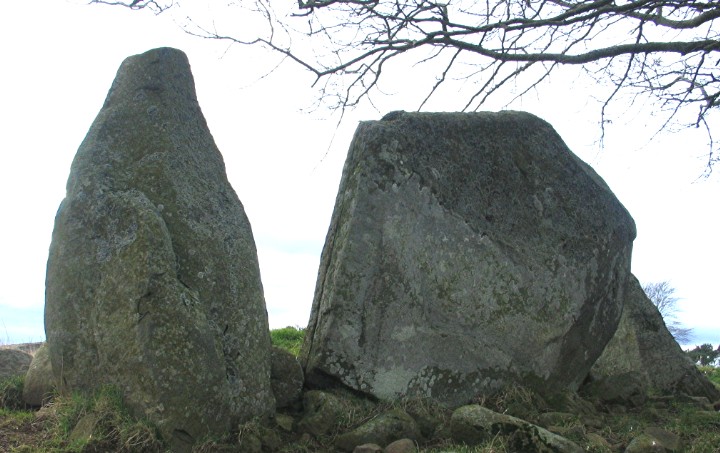

From the SE looking over the outlier.

Rather grainy long shot from the road (SW).

N half of the circle looking E

Looking eastish.
The access arrangements can be seen in the centre.

The N & E stones.

Throwing stone to land on the flat top seems to be a tradition – possibly foretelling some happy event for the successful.

You can get some idea of the scale of this from the fence.

The recumbent (3.6 x 1.5m) from outside the circle.
Knock Hill (10km N) is in the distance.

The recumbent from inside the circle.

The markings on the inner face of the recumbent which mark the line of the major southern moonset.

The external face of the recumbent (2.8m x 1.9m) and flankers (2.2m and 2.0m).

The recumbent and flankers from inside the circle area.

From outside the circle

Recumbent (2.8m) and flankers (1.4 and 1.6m) from inside the circle.

Looking across the circle showing two of the three remaining upright circle stones and the outline of the ring cairn in the circle.

The 10m cairn immediately to the E of the circle. Recently excavated by the looks of it.

Recumbent (3.1m long x 3.2m high) and flankers (3.4m and 2.9m) from the outside

Recumbent and flankers from the inside.

The S half of the circle

Showing the ring cairn

External face of recumbent and flankers.

Recumbent and flankers from inside the circle.

Dusk 16/3/05

Dusk 16/3/05

This and the next image are looking eastish – the sea is just visible. The trees in the distance are the same and part of the stone at the right of this image appears on the left of the next one.
There are lots of stones lying around – some looking like they might have edged ring cairns and some as if they could have been standing stones.

Recumbent and flankers from outside the circle.

Looking SW

Looking across the ring cairn to the recumbent and flankers.

It’s not a great photo but this is the stone E of the east flanker which has 12 cupmarks on its inner face.

From outside.

From inside.

Recumbent and flankers from inside the circle.

A view across the circle.

Recumbent and west flanker from inside the circle.

Recumbent and west flanker from outside the circle.

A view across the best part of the circle showing the bank.

An example of the different colour of stone often found in RSCs.

The recumbent and flankers from outside the circle.

A view across the circle to the recumbent and flankers.

The ring cairn. The circle stones are off-picture to the right.

From the S or outside the circle.

From what would be the inside of the circle.






